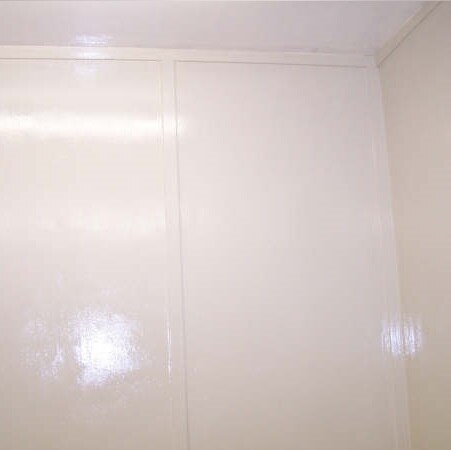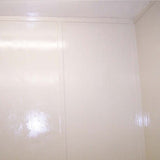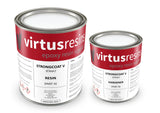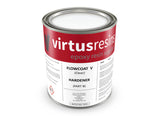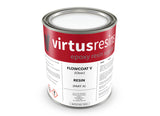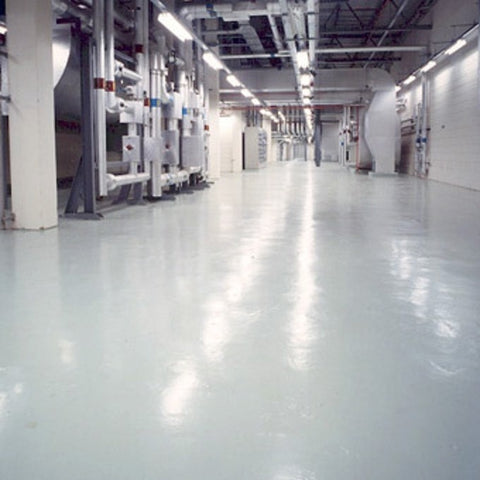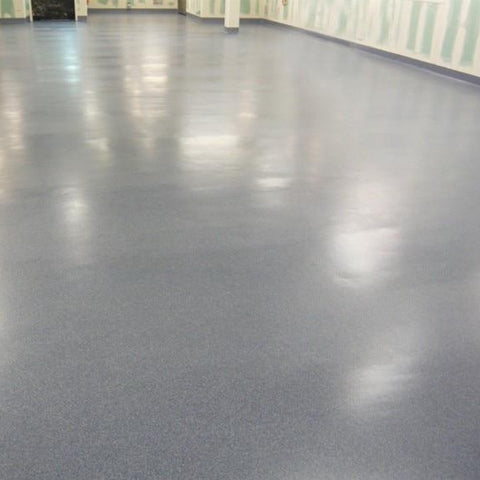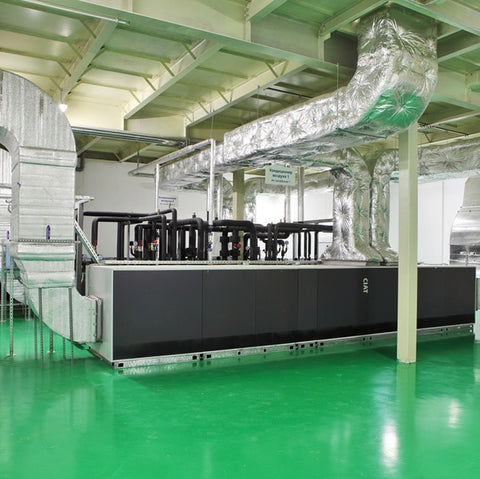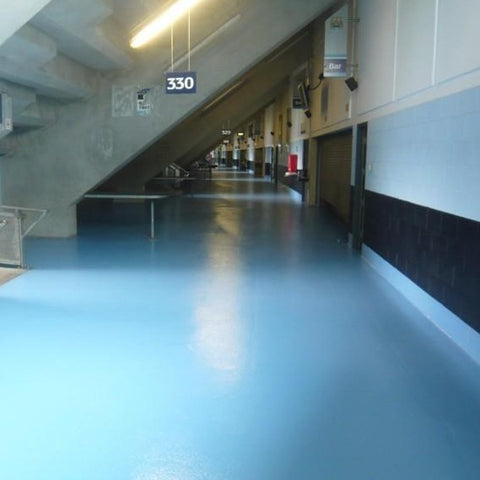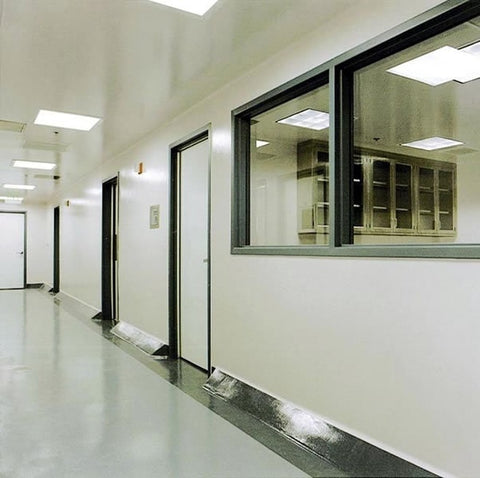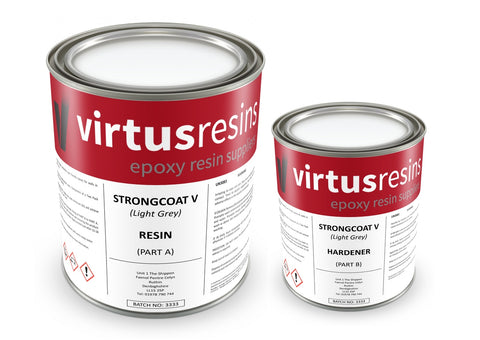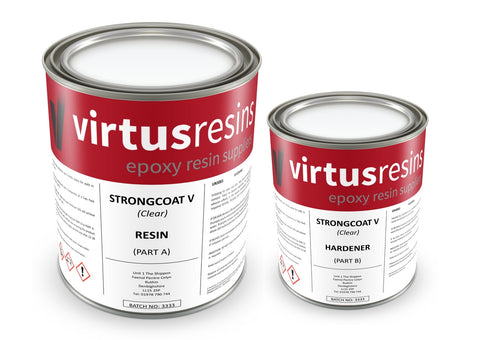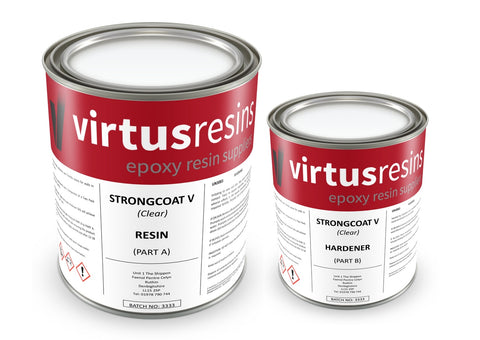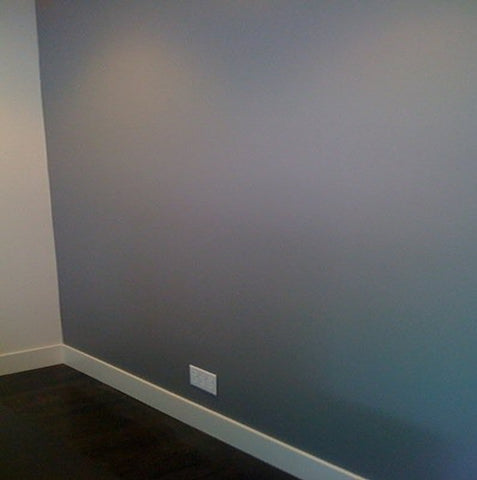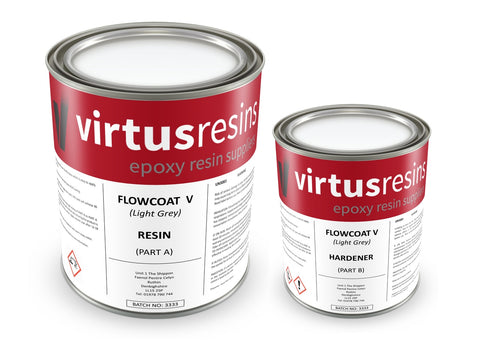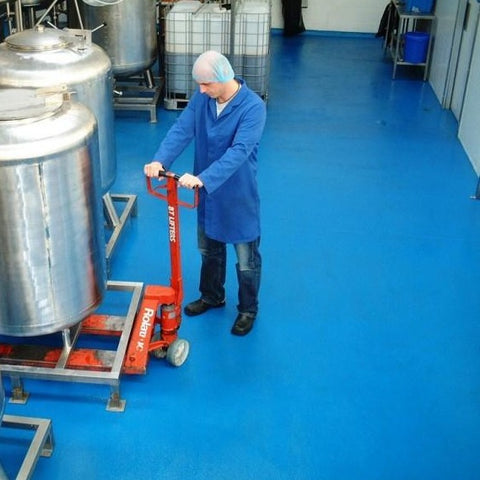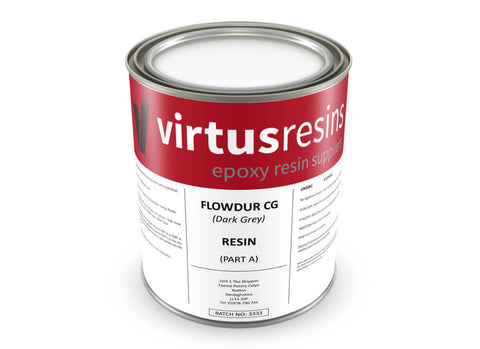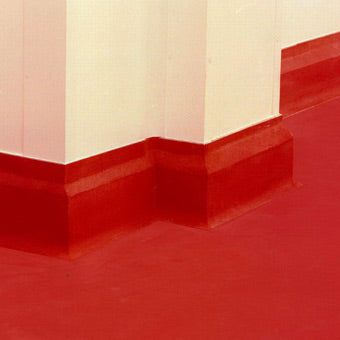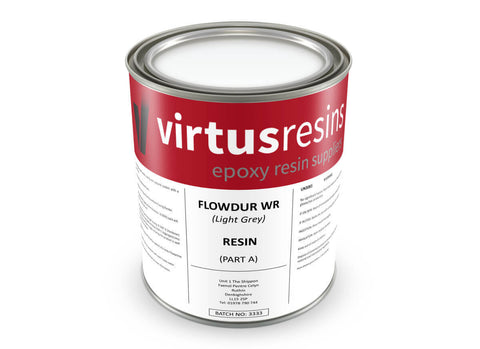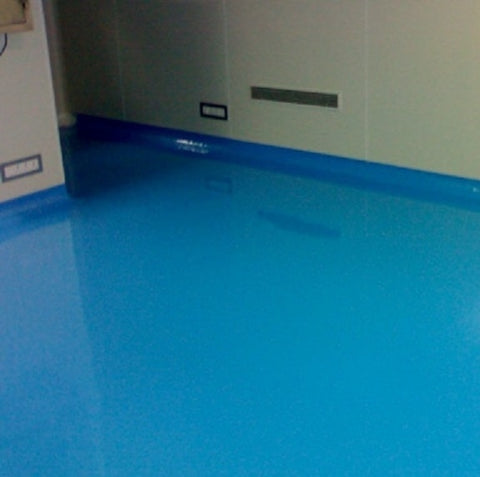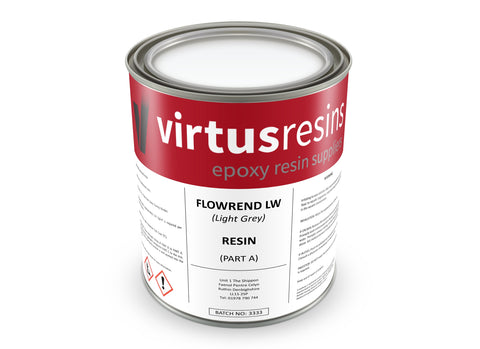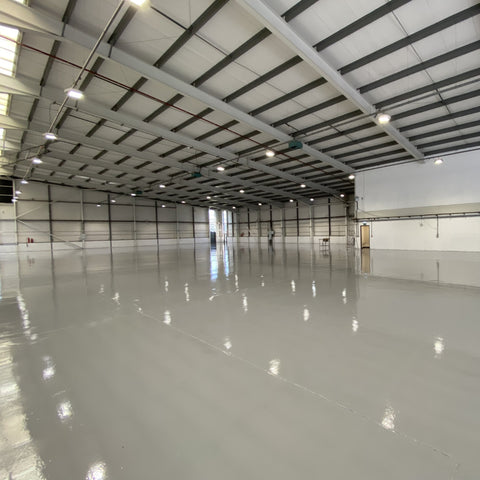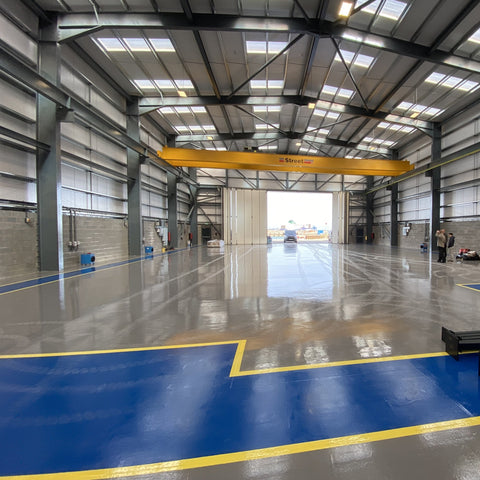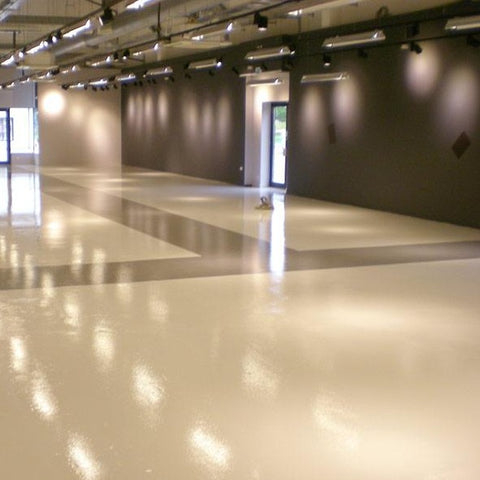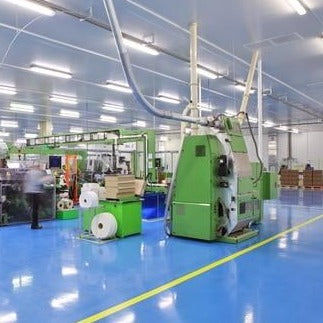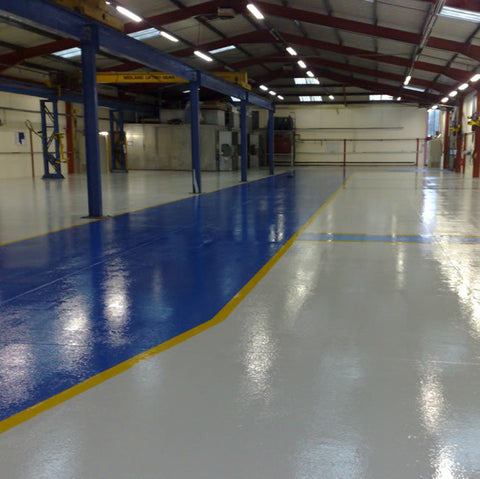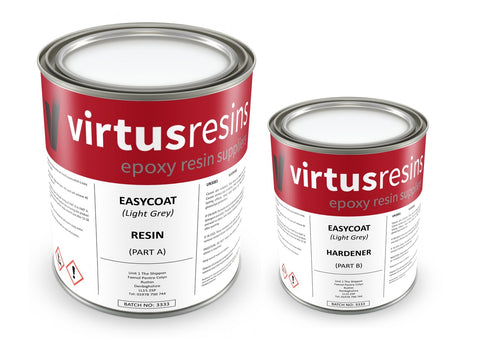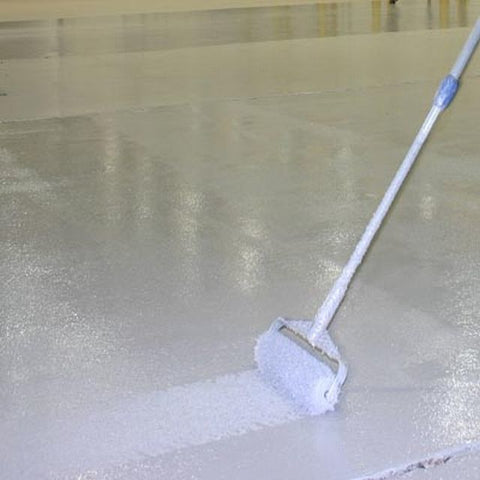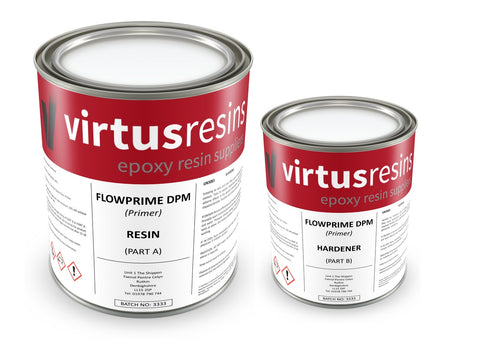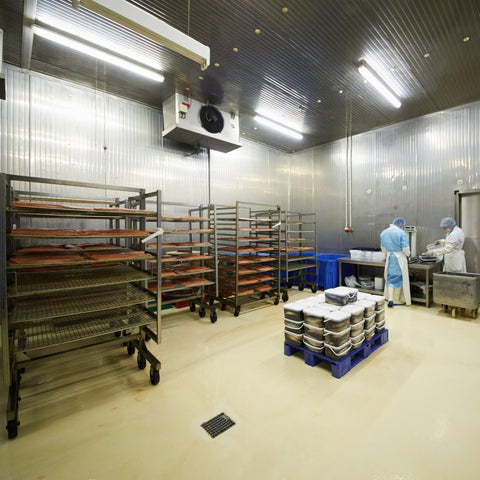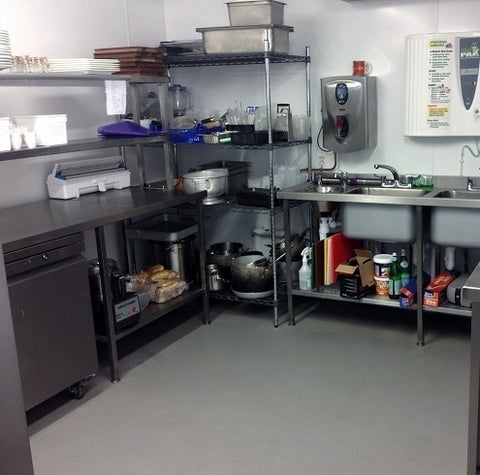Flowcoat V Clear - Water Dispersed Wall Coating
Vendor: Virtus Resins
Appearance
Surface Preparation
Coverage
Cleaning
Thickness
Primer
Application Conditions:
Resin products should not be mixed and laid outside of the range 10 °C to 25 °C. Localised heating or cooling equipment may be required outside this range to achieve ideal temperature conditions. To reduce the risk of "blooming” caused by condensation, the climate above the uncured floor should be maintained at least 3 °C above the dew point for at least 48 hours after application. The atmospheric relative humidity should be below 80% and good ventilation should be provided to aid the removal of water and maintain curing times. The substrate should be surface dry with a maximum relative humidity of 75% and free from rising damp and ground water pressure. An effective damp proof membrane should be present in walls and floors.
Surface Preparation:
The concrete substrate must be sound with a minimum compressive strength of 25 N/mm² and a minimum pull off strength of 1.5 N/mm² . The substrate must be clean, dry and free of all contaminants such as dirt, oil, grease, coatings and surface treatments, etc. inadequate preparation will lead to loss of adhesion and failure. In coatings, there is a tendency for the finish to mirror imperfections in the substrate. Grinding, or light vacuum-contained shot-blasting is therefore preferred over planing for these systems. Percussive scabbling or acid etching is not recommended.
Refer to the Virtus Guide to Surface Preparation for further information. The substrate should be smooth as surface irregularities will show through the coating and excess wear will occur on high spots. If any doubt exists, trial applications should be carried out to assess the adhesion characteristics of Flowcoat V in specific situations.
Mixing:
Pre-mix the coloured resin component before use. Add the hardener component to the coloured resin component and mix using a low speed electric mixer (200 - 500 rpm) fitted with a mixing paddle designed to minimize air entrainment for 1 - 2 minutes until homogeneous. Care should be taken to ensure that any material adhering to the sides and bottom of the mixing vessel is thoroughly mixed in otherwise uncured patches may result.
Important: Both liquids are pre-weighed and designed to be mixed together in their entirety. It is essential that the full amounts are mixed together and until homogeneous to ensure the product cures correctly and to the desired finish.
Application:
Apply by brush, roller or airless spray.
Depending on the substrate porosity, the first coat may be diluted with up to 10% water to aid penetration. The water should be added after mixing of the resin and hardener components is complete. Avoid ponding of the coating as trapped water will lead to incomplete cure.
Do not apply subsequent coats until the previous coat is completely dry. This will depend on temperature, atmospheric humidity and degree of ventilation. Adequate ventilation and air movement is necessary.
Each coat should be applied at right angles to the previous coat in order to minimize imperfections and unevenness overall. Uneven application may lead to differences in gloss level across the cured floor.
Flowcoat V Technical Data Sheet
Safety Data Sheets
Flowcoat V Hardener
Flowcoat V Resin

